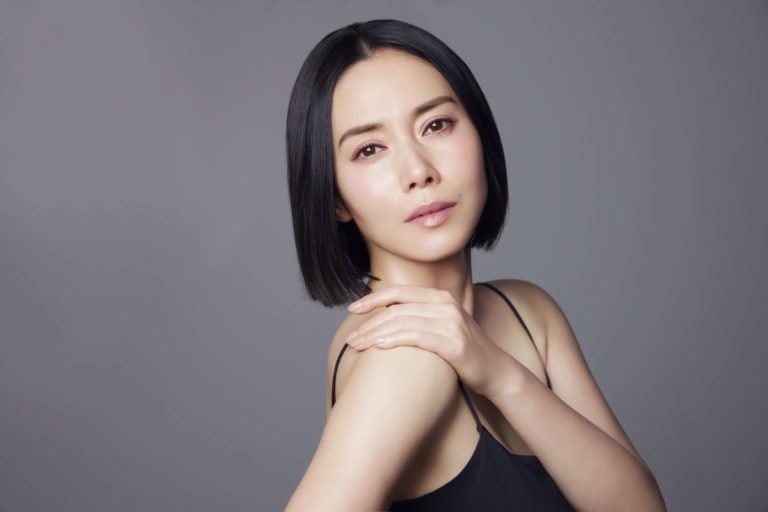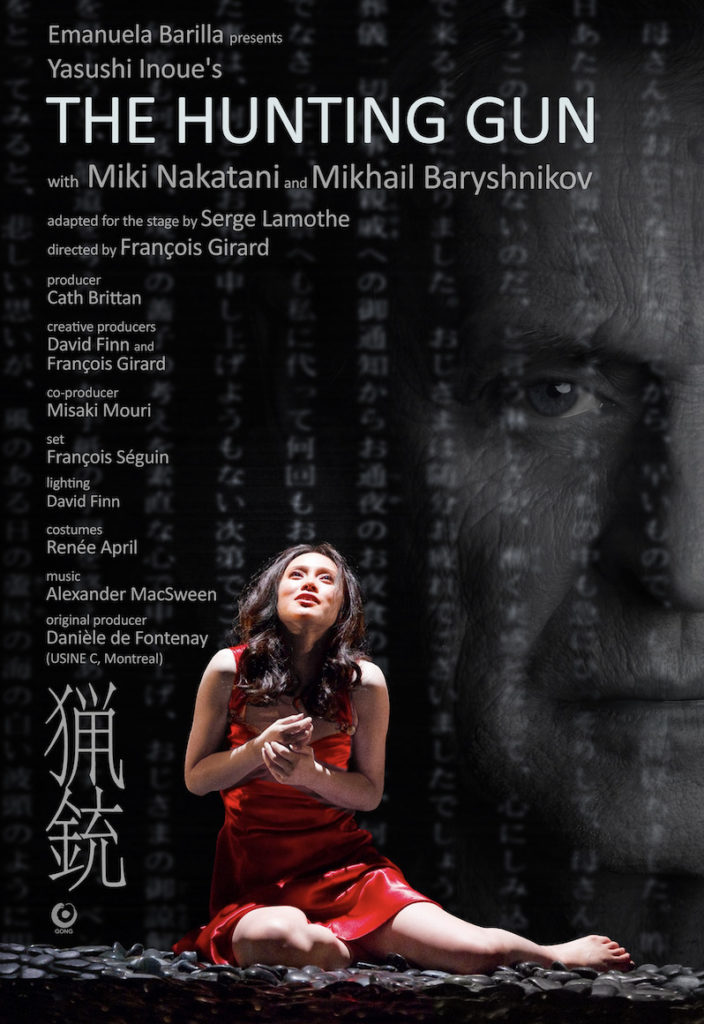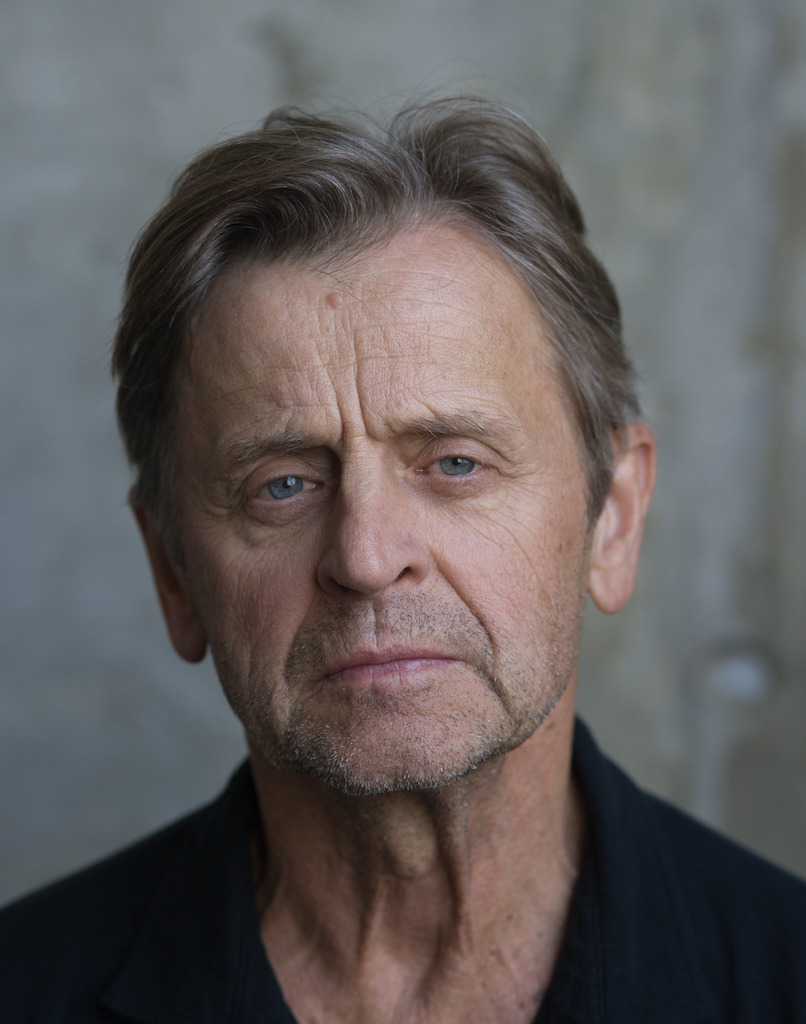
Miki Nakatani was born in Tokyo in January 1976 and She began her career as a member of the girl group Sakurakko Club from 1991 to 1993, wherein she formed the duo Key West Club with member Keiko Azuma.
Nakatani focused on acting after her departure, making her debut on the popular TV series, “Under One Roof.” From 1998 to 1999, Nakatani starred in a trio of horror films – “Ring,” “Rasen,” and “Ring 2” – followed by a lead role in Hideo Nakata’s Chaos in 2000. That same year, she reprised her television role as Jun Shibata in the mystery film, “Keizoku.”
She has won six Japan Academy Prizes for her work: Best Supporting Actress for “When the Last Sword Is Drawn” (2003, directed by Yojiro Takita), Best Leading Actress for “Memories of Matsuko” (2006, directed by Tetsuya Nakajima), Best Leading Actress for “Jigyaku NoUta “(2007, directed by Yukihiko Tsutsumi), Best Supporting Actress for “Zero Focus” (2009, directed by Isshin Inudo), Best Actress Award for “Hankyu Railway -A 15 Minute Miracle” (2011, directed by Yoshishige Miyake), and Best Supporting Actress in a Leading Role for “Ask This of Rikyu” (2013, directed by Mitsutoshi Tanaka).
Appearances in foreign productions include “Silk” (2007, directed by François Girard) and “FOUJITA” (2015, directed by Kohei Oguri). In 2011, she made her debut as a stage actress in “The Hunting Gun” at USINEC, Montreal. In the same year, she staged a return performance in Japan, winning the Kinokuniya Theatre Award Actress of the Year and the Yomiuri Theatre Awards for Best Actress. The following year, she won the Yomiuri Theatre Award for Best Actress for her performance in “Lost in Yonkers” by Neil Simon.

Photo by Mark Seliger
Exclusive Interview with Actress Miki Nakatani
Q: The original stage production of Yasushi Inoue’s “The Hunting Gun” took place in Montreal, Canada, in 2011. It was also performed in Japan in 2016. When did you decide to do it in New York, Broadway’s home?
Miki Nakatani: I received this offer in May of last year. All of a sudden, I was approached by Misaki Mouri, a Japanese producer who also works on this New York production.
Q: Yasushi Inoue’s “The Hunting Gun” is an epistolary novel composed of three women’s letters addressed to Josuke Misugi. These letters cover 13 years of unfaithful love affairs. When did you first read the story, and what attracted you to it that led you to perform it again and again?
Miki Nakatani: I once worked with director François Girard on a movie called “Silk.” When I heard about this stage production after we finished shooting “Silk,” I received an offer in the form of, “Choose which of the three women you want to play.” That was probably in 2006 or 2007. Initially, I said yes, then no, and back and forth many times. I was quite hesitant, that’s why it took nearly five years from then until the performance. When I was presented with such a proposal, I was asked to choose one of the three women. I couldn’t choose just one. That’s why, after I read the story, I suggested to François, “Why don’t you let me play the three characters by myself?” François immediately said, “Yes,” on the spot, [noting] that it would be better to do so because he wouldn’t have to pay the performance fee for three people, and that would save money. I think he was half joking and half-serious about that.
I also thought that it would be richer if one person played three roles, and the director François agreed with my suggestion. What attracted me to this play is that Japan’s life is probably the image that westerners have of Japanese women, who are very obedient, modest, humble, and dependent on men. I think you have the image of taking three steps back, or the stereotypical image of having no facial expressions and emotions. What I got from this novel is that Japanese women have their own feelings and wills, but they just hide them. I think you probably sensed that. I felt so too. After all, we wanted to go to Europe and the United States to overturn the image that something was judged on its own.
Q: In this play, you play the three roles of Midori, Saiko, and Shoko.They’re different ages, have different personalities and fashion styles. So how do you approach each one? Where do you start?
Miki Nakatani: At an early stage, there was a suggestion that Saiko, the last woman, would play the role of a mistress, and that she would deliver lines while wearing a kimono on stage. The production plan was made very early on that the three women would change their kimonos and costumes on stage without getting off stage. For me, of course, there were things that helped on the surface, such as clothes and hairstyle and so on. First, I had a lot of discussions with François about how to read and interpret the book, instead of just sitting at a desk and then, standing.
Q : Although this project of two-person play, it is centered on Nakatani’s monologue. And Rodrigue Proteau, who has co-starred in Canada and Japan, remains silent, and the only physical expression behind Nakatani throughout the production. However, this time, the legendary world-famous ballet dancer Mikhail Baryshnikov will play the role of Josuke Misugi, what can we expect from Baryshnikov?
Miki Nakatani : “I received an offer when it was already decided that Mr. Baryshnikov would play the role of Josuke Misugi, but when I received an inquiry from Mr. Mouri asking if I would like to play the role, I said without thinking, “Yes!” It seems that he made a spur-of-the-moment decision.
I had seen the film, “White Knights” in which Baryshnikov appeared before. In that movie, the scene of a defector from the Soviet Union at that time was really strongly burned into my mind, and I was really excited to be able to work with Mr. Baryshnikov. At the same time, this work requires mental and physical energy to act, and it is really necessary to manage your own physical condition and throat, and there is also a production that makes you scream, so every night your throat gets burned. It is also important to decide whether to calm down. But can it really be done? I was worried about that, and seemed to be preparing to inspire confidence in co-starring with a big ballet dancer.
However, regarding the fact that Baryshnikov will change the production on the same stage, I don’t think it will change. I am rather surprised that Mr. Baryshnikov will do that. I think that he is a top dancer and is probably like a god to all dancers. Instead, he showed us how to load a shotgun and shoot people in slow motion, akin to Butoh, or Japanese Noh. To see Mr. Baryshnikov stopped moving and moving his creations from motion to stillness is the most moving thing for me. I’m looking forward to it,” he replied with a twinkle in his eye.
François Girard
Q: As I mentioned earlier, your monologue is the centerpiece of this play. You speak continuously for nearly 90 minutes. There are many scene descriptions and explanatory lines, but what approach did you take to memorize all the lines?
Miki Nakatani: I have to get used to it. For me personally, visual information is, of course, important, but I find that auditory information easier to remember. By the way, can I see my script — and shows her script of “The Hunting Gun” — it’s my special original script.
Q: It’s written in English on the side. Some of it is in color.
Miki Nakatani: Yes, the first page is white. It’s printed in blue letters on pink. This is for the character Shoko. Midori has blue letters printed on a yellow-green page.Saiko is printed in blue letters on blue.
Q: Why was the script printed that way? Is it to make it easier for you to understand which role you’re playing?
Miki Nakatani: This play was my first stage performance in 2011, but it’s not my custom to always be close to each other, so when the work is over, it’s like saying “goodbye.” You can’t tell someone how to memorize. I couldn’t do it, so I had to develop memory techniques in my own way. How can the memory stick? There weren’t any lines from movies or TV dramas that were this long, so if there was a line in a movie or TV drama, I could easily memorize it by reading and repeating it several times.
It was the first time for me to have so many lines, so it was written in a mnemonic book that, if you printed it in blue letters on pink paper, you can use both the right and left hemispheres of the brain to fix the memory. Anyway, how the brain reacts to colors, it really comes into your mind more than just as black letters printed on white paper. It’s strange, but I have an image of repeating and repeating lines, and a sense of rhythm can be learned.
It’s specifically an image. If you ask me to see waves rushing in from all directions, like the white waves of the sea in Ashiya, I will actually check the sea in Ashiya on Google and create images in my brain of waves surging in from all directions. Memories are piled up in a way that is burned into the brain as memory.
Q: François Séguin of Cirque du Soleil’s “Red” was in charge of the sets and the art. What is it about the set and art that makes it so appealing on stage and in your performance?
Miki Nakatani: At first glance, it’s a set where the actors have nowhere to turn. In a sense, it’s an empty space. There are no chairs, tables, doors or lamps of any kind. It’s a blank set, but at first the customer sees the surface of the water as if the water lilies were growing. Furthermore, when it comes to the role of Midori, the water disappears, and the stage is covered with black stones like a Nachi waterfall or bath. This is also great and really waterless.
At first glance, it looks simple, but it’s actually a very elaborate and large-scale set that’s difficult to take to another place or set up on the spot. From the audience’s viewpoint, it looks like a simple set. In the end, the stone disappears again, and the board that was laid under the stone is turned upside down. The stone is sucked in more and more, and, this time, the board appears. There is a Japanese quote, Mokkado Gonsui (In Gogyo thought, it’s a way of saying that the rise and fall of the cycles of the five elements are arranged in order).
“Tree” is the wood between the boards; “Fire” is not sure if it can be done at the theater this time, but with incense sticks. I will do the work of lighting the fire — you could think of it as shotgun fire. The soil will be replaced with stone — gold will be replaced with hardware store metal for hunting guns. As I mentioned earlier, the surface of the water is covered with water lilies. This is very strange, as it is quoted, Mokkado Gonsui are all included. Even though it was directed by a lot of foreigners, François Séguin and lighting director David Finn exquisitely extracted the goodness of Japanese culture. It’s not a so-called Japanese style that even we Japanese couldn’t think of, but a very modern set that incorporates the essence of Japan, and I think it’s very modern or contemporary.
Q: You worked with François Girard on the same stage three times — in Canada, Japan and New York. With all that experience, in what ways do you think you have grown as an actress, what elements that you learned from him?
Miki Nakatani: His rehearsals are very short. In spite of the amount of lines we have, in 2011, during the five-hour rehearsal, François-san made green tea himself. Then we chatted over tea for an hour. Acting is “play” in English and “jouer” in French which also means “to play.” He said, “acting is synonymous with playing.” It seems that he had taught me about the joy of playing. Until then, I thought that I had to suffer in order to create good work. I had such a stereotype planted in my head. I think it was François who overturned it.
At the same time, even though I say enjoy it, it feels like a screwdriver is being screwed into the essence. It wasn’t that I was yelled at or anything like that, but I really felt like it was planted in the depths of my soul for this role. How should I describe it? He is very good at playing by himself. He compares it to Shakespeare’s “Othello”– which he himself performs on stage — and likens the sadness and anger of my character Midori to Othello. I saw with my own eyes that I should draw out emotions to this extent.

Actor Mikhail Baryshnikov
Q: After you got married in 2018, you continued to work in Japan while keeping the center of your life in Vienna. After moving to Vienna, what kind of influence did Vienna have on you as an actress?
Miki Nakatani: Fortunately, Austria is a city of art and culture. I think New York is the same, but people can still live with the assets they left behind, such as Mozart and Beethoven. The tourism industry is the same, so is the music industry, the opera world, the theater scene, and the painting world. The fact that all kinds of once-blooming arts communities are still able to make a living from them, and they place them at the center of their lives. It’s not just about being involved in the arts, whether you’re an ordinary business person, a housewife, a kindergarten student, or a student, but that art is at the heart of everyone.
Fortunately, because of my husband’s work, I have been blessed with many opportunities to see his rehearsals. It’s fun for me to experience the actual performance, but the rehearsal process is much more fun than the actual performance, so I guess that’s why they don’t waste their efforts. Japanese people still have the illusion that good things can only be made by spending time. That’s what I’m doing too. Of course, each of you may be practicing on your own, but it’s really a short-term focus for them. I was able to learn a lot from seeing how they focused on that time, increased productivity, and then properly valued their time with their families and private time. I have played the role of essayist Masako Shirasu before. In Shirasu’s book, it was written that the actors were created behind the scenes. I wonder if this is what it is, it reminded me that it was very important to enjoy ordinary everyday life. I’ve neglected it for years.
Q: This year marks the 30th anniversary of your career as an actress. Is there anything you want to do that challenges you as an actress?
Miki Nakatani: In fact, it was a job that I started by chance when I was approached in the city. Thankfully, I was fortunate enough to be blessed with good connections, and with everyone’s help, I have been able to continue so far. I don’t have the feeling that I want to do something for myself, or that I want to grab something. Here in New York, when I go to restaurants, there are usually actors working as waiters. I’m surprised that they are full of enthusiasm, full of motivation, or they have a desire to improve themselves. I feel their pressure.
Q: Are there any film or stage directors you’d like to work with in the US?
Miki Nakatani: If I could choose any director that’s alive, I’d like to work with Gus Van Sant. I’ve been watching a lot of movies since I was a teenager, so I like directors who look closely at the subtleties of the human mind such as Clint Eastwood.
Q: This play will be shown to discerning New York audiences who watch Broadway and off-Broadway shows. What would you like New Yorkers to see?
Miki Nakatani: First of all, François Girard’s direction is wonderful, so of course, even though I will stand on the stage myself, but before that, Mr. François Girard’s direction and Yasushi Inoue’s writing of Japan. The language is really beautiful, and the rhythm of the Japanese language is also very beautiful, so even if you don’t understand Japanese, even if you watch the subtitles in English, I think you can enjoy the beauty of the Japanese language. I will put on the kimono from scratch on stage, so I will depict the process of how Japanese people wear kimonos. There are people who’ve been away from Japan for many years, so I think Japanese people will enjoy it as well. I would like people from all over the world who are interested in Japanese culture to see it. I’m looking forward to seeing how the people who remember Mikhail Baryshnikov’s dancing will see this performance. I’m sure it’s already shocking and sensational.
Check out more of Nobuhiro’s articles.


Thank you. It’s a wonderful production and breathtaking performance by Ms. Nakatani. And yes, although I understand only very little Japanese, I could recognize and appreciate something of the rhythm and beauty of the language, thanks to the wonderful vocal performance of Ms. Nakatani.